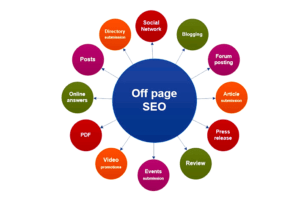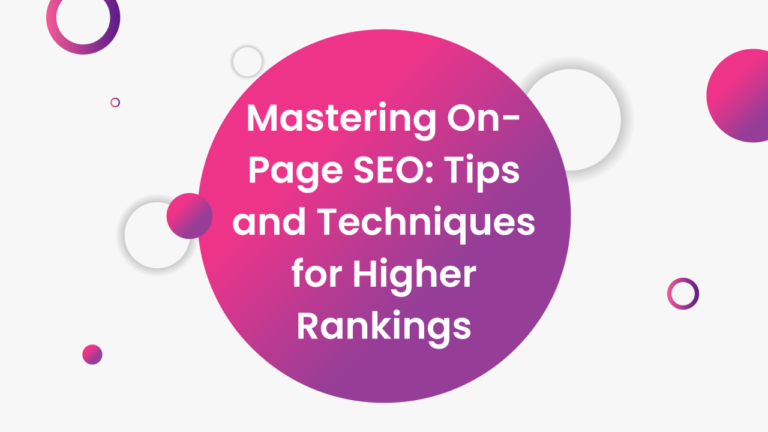SEO Best Practices | Guide to Boost Website Search Rankings
How you perform SEO will affect the way a website does in search engines and result in organic traffic. So as long as you treat it with care and carry on doing SEO best practices, your website can easily achieve higher rankings in search engines like Google and Bing.
There are also more people clicking on advertisements following such searching terms (as online marketing studies show). If you want your site running smoothly and in today’s style, then read this guide because it covers all the bases!
Keyword Research and Targeting
Like every effective SEO strategy, there is a fundamental element: keyword research. This process involves identifying the terms that your target audience uses when searching for products or services in search engines.
- Tools for Keyword Research: Use tools like Google Keyword Planner, Ahrefs, and SEMrush because they help you discover low-competitive and related keywords within your niche. These tools conduct competitor analyses to identify keyword gaps where you could potentially achieve higher rankings.
- Long-Tail vs. Short-Tail Keywords: Long-tail keywords (e.g., “best SEO tools for small businesses”) are notably specific and typically face less competition than short-tail keywords (e.g., “SEO tools”). Selecting these long-tail keywords can lead to quicker rankings and initial traffic because larger, authoritative websites often do not target these specific phrases. However, this strategy requires ongoing effort and adaptation to maintain effectiveness.
- Targeting Keywords with Intent: Focus on keywords that align with your audience’s search intent; however, these keywords are informational, navigational, or commercial, and also do not use keyword clustering techniques.
On-Page SEO
Optimizing the content and structure of individual pages on your website can significantly impact your rankings.
- Title Tags and Meta Descriptions: Ensure that your title tags are concise, include target keywords, and describe the content accurately. Meta descriptions should be compelling, with a clear call-to-action, and between 150 and 160 characters.
- SEO-Friendly URLs: Your URLs should be short, descriptive, and contain your target keywords. Avoid using special characters or overly complex URL structures.
- Header Tags (H1, H2, etc.): Use H1 tags for your page’s main heading and H2-H6 tags for subheadings. This hierarchy makes your content easier to read and helps search engines understand the page’s structure.
- Keyword Placement and Content Optimization: Include your target keywords naturally throughout the content, especially in the title, first 100 words, and subheadings. Avoid keyword stuffing—focus on readability and user experience.
- Internal Linking: Add internal links to related articles or pages on your site. This improves site navigation, distributes link equity, and helps search engines crawl your website more effectively.
Technical SEO
Technical SEO ensures that search engines can crawl, index, and understand your website properly.
- Site Speed and Mobile Optimization: Page speed is a ranking factor. Use tools like Google PageSpeed Insights to identify performance issues. Optimize images, enable browser caching, and consider using a content delivery network (CDN). Ensure your site is mobile-friendly, as Google uses mobile-first indexing.
- Website Security (HTTPS): A secure website with HTTPS is not only critical for user trust but also a ranking signal for Google.
- XML Sitemap: Create an XML sitemap that lists all your website’s important pages. Submit this sitemap to Google Search Console to help search engines crawl and index your content.
- Robots.txt: Use the robots.txt file to control which parts of your website search engines should or shouldn’t crawl. However, ensure you’re not accidentally blocking important pages from being indexed.
- Fix Crawl Errors and Broken Links: Regularly check Google Search Console for crawl errors and fix broken links to prevent search engines from penalizing your website.
Content Optimization
High-quality content is essential to SEO. Search engines prioritize sites that provide valuable, relevant information to users.
- Create valuable content: Your content should address user intent, be informative, and offer actionable insights. Use original research, case studies, or in-depth guides to stand out from competitors.
- Optimize for Engagement: Make your content engaging by incorporating multimedia like images, infographics, and videos. Optimize images by using descriptive alt tags and compressing files for faster load times.
- Structured Data (Schema Markup): Use structured data to enhance how your content appears in search results. For example, adding schema markup for products, reviews, or recipes can make your listings more appealing with rich snippets.
Off-Page SEO and Link Building
Building backlinks from reputable websites boosts your site’s authority and ranking potential.
- High-quality backlinks: Focus on earning backlinks from high-authority websites in your niche. Backlinks from news outlets, educational websites, or trusted blogs are particularly valuable.
- White-Hat vs. Black-Hat Strategies: White-hat link-building practices, such as guest posting and outreach, are long-term strategies that focus on genuine value. Avoid black-hat tactics like buying links or participating in link farms, as they can lead to penalties.
- Guest Posting and Outreach: Writing guest posts for relevant websites can help you earn backlinks and drive traffic. Outreach to influencers and bloggers in your industry can also help promote your content and improve SEO.
Mobile-First Indexing and Core Web Vitals
With mobile-first indexing, Google prioritizes the mobile version of your site for ranking.
- Mobile Optimization: Ensure that your website is fully responsive, with easily readable text, touch-friendly buttons, and fast loading speeds on mobile devices.
- Core Web Vitals: These metrics—Largest Contentful Paint (LCP), First Input Delay (FID), and Cumulative Layout Shift (CLS)—are essential for user experience. Improving these metrics will enhance both SEO and user satisfaction.
User Experience (UX) and SEO
User experience directly affects how long visitors stay on your website and whether they engage with your content.
- Bounce Rate and Dwell Time: A high bounce rate and low dwell time can signal to search engines that your content isn’t satisfying users. Improve these metrics by offering easy navigation, engaging content, and a clean layout.
- Readability and Layout: Ensure your content is easily read with clear headings, short paragraphs, and bullet points. A cluttered layout or too many pop-ups can frustrate users and hurt your rankings.
Local SEO
If you run a local business, local SEO can help you attract nearby customers.
- Google My Business Optimization: Set up and optimize your Google My Business listing with accurate information, including your business name, address, phone number, hours of operation, and categories.
- Local Keywords and Pages: Use location-based keywords in your content and create dedicated pages for specific regions or cities.
- Reviews: Encourage customers to leave positive reviews on Google and other review platforms. Reviews play a significant role in local search rankings.
Measuring SEO Success
Tracking your SEO efforts is crucial to understanding what works and what needs improvement.
- Key SEO Metrics: Monitor key metrics like organic traffic, keyword rankings, conversion rates, and bounce rates. These metrics provide insights into how your SEO strategy is performing.
- Google Analytics and Search Console: Use Google Analytics to track user behavior and Google Search Console to monitor your site’s search performance, including click-through rates and indexing issues.
- Adjusting Strategies: SEO is an ongoing process. Regularly analyze your performance data to refine your strategies and improve your website’s rankings over time.
Conclusion
Incorporating these SEO best practices will help your website rank higher in search results, attract more visitors, and improve user engagement. Stay up-to-date with the latest SEO trends, and don’t hesitate to adjust your strategies as search engine algorithms evolve.
By following these guidelines, you’ll build a strong SEO foundation that can lead to long-term success.
Implement these practices today, and watch your site’s visibility and traffic grow!







